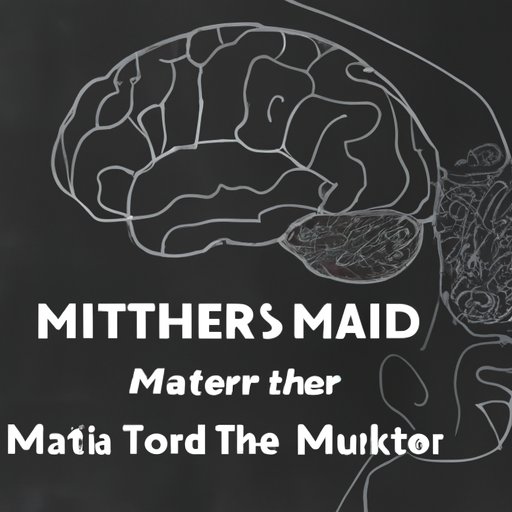
Introduction
Punching is an essential skill in a variety of sports, including boxing, MMA, and martial arts. Proper punching technique can make all the difference during a fight, and can greatly improve your chances of success. In order to throw an effective punch, you must have the right technique, body positioning, and mindset. In this article, we’ll explore the tips and techniques needed to perfect your punching skills and become a stronger fighter.
5 Tips for Effective Punching Technique
Tip 1: Stance and Balance
Your stance and balance are critical components of a strong punch. Make sure your feet are shoulder-width apart, with your non-dominant foot slightly ahead of your dominant foot. Your knees should be slightly bent, and your weight should be distributed evenly between both feet. This will give you a strong base and allow you to generate maximum power with your punch.
Tip 2: Proper Hand Positioning
Proper hand positioning is key to a successful punch. Make sure your hands are up, with your dominant hand at your chin and your non-dominant hand guarding your body. Keep your elbows close to your body to protect your ribs and vital organs. This will not only protect you from strikes, but also allow you to react quickly with counterpunches.
Tip 3: Breath Control and Body Movement
Breath control and body movement are essential parts of effective punching technique. Take a deep breath before throwing a punch and exhale as you make contact. This will help you generate more power and also keep you calm and focused. Use your body weight to add power to your punch, by turning your hips and shoulders into the punch. This will also help you avoid telegraphing your punches.
Tip 4: Target Selection and Precision
Choosing the right target is important when throwing a punch. Aim for the chin, jaw, or temple to maximize the impact of your punch. However, be careful not to punch too high or too low, as this can leave you vulnerable to counterattacks. Practice aiming for a variety of targets to improve your precision and accuracy.
Tip 5: Practice Drills and Repetition
The more you practice, the better you’ll become at punching. Use a heavy bag or a punching dummy to practice your technique. Start with slow, controlled punches and gradually increase your speed and power. Repetition is key to developing muscle memory and improving your punching technique.
Mastering the Art of Punching: A Comprehensive Guide
Overview of Different Types of Punches
There are several different types of punches, each of which has its own specific technique and purpose. The most common types of punches include:
– Jab: a quick, straight punch thrown with your lead hand
– Cross: a straight punch thrown with your rear hand
– Hook: a circular punch thrown with your lead hand
– Uppercut: an upward punch thrown with your rear hand
– Overhand: a looping punch thrown with your rear hand
Components of a Strong Punch
A strong punch relies on several key components, including:
– Speed: the faster your punch, the harder it will hit
– Power: use your body weight and momentum to add power to your punch
– Precision: aim for the right target at the right time
– Timing: time your punch to land when your opponent is least expecting it
– Technique: use proper punching technique to maximize your impact
Step-by-Step Guide to Perfecting Your Punch
To perfect your punch, follow these steps:
1. Start with proper stance and balance, feet shoulder-width apart and weight evenly distributed
2. Keep your hands up and elbows close to your body
3. Take a deep breath and exhale as you punch
4. Use your body weight to add power, turning your hips and shoulders into the punch
5. Aim for the right target at the right time
6. Practice drills and repetition to improve your muscle memory and technique
How to Throw a Powerful Punch: Techniques for Beginners
Explanation of How Power is Generated in a Punch
Power in a punch is generated from a combination of speed, technique, and body weight. The faster and more technically sound your punch is, the more power it will have. Additionally, using your body weight to add momentum to the punch will increase the force of impact.
Techniques to Improve Punch Power
To improve your punch power, focus on the following techniques:
– Proper technique: use the right form and hand positioning to maximize your punch
– Strong stance: keep your feet shoulder-width apart and distribute your weight evenly
– Breath control: take a deep breath before punching and exhale as you make contact
– Use your body weight: turn your hips and shoulders into the punch to add momentum
– Practice drills: repetition is key to developing muscle memory and increasing punch power
Common Mistakes Beginners Make and How to Avoid Them
Common mistakes beginners make when throwing a punch include:
– Overextending: reaching too far with your punch, leaving you vulnerable to counterattacks
– Telegraphing: making your punch predictable by windmilling or telegraphing your motion
– Footwork: poor balance and footwork can affect the power and accuracy of your punch
– Insufficient power: not using your body weight and momentum to add power to your punch
To avoid these mistakes, focus on proper technique, strong stance, breath control, and practice drills to improve your skills.
The Science Behind Proper Punching Form
Explanation of the Biomechanics of a Punch
The biomechanics of a punch involve a complex interaction of forces, including gravity, momentum, and inertia. Proper punching form involves generating maximum force while minimizing the energy required. This is achieved through proper hand positioning, body movement, and weight distribution.
Importance of Understanding the Science of a Punch
Understanding the science behind punching can help you optimize your technique and power. By understanding how forces interact during a punch, you can make subtle adjustments to your technique to improve your impact and reduce your energy expenditure.
How to Apply Scientific Principles to Improve Your Technique
To apply scientific principles to improve your punching technique, focus on the following areas:
– Proper hand positioning: keep your hands up and use proper technique to maximize your force
– Body movement: use your body weight and momentum to add power to your punch
– Timing: time your punch to land when your opponent is least expecting it
– Target selection: aim for the right target at the right time
– Repetition: practice drills and repetition to develop muscle memory and improve your technique

Mind Over Matter: Mental and Physical Techniques for Stronger Punches
The Role of Mental Focus in a Strong Punch
Mental focus is a critical component of a strong punch. Keeping calm and focused during a fight can help you make more accurate punches and avoid telegraphing your movements. Mental focus also helps you stay present in the moment, which is essential during a high-pressure situation like a fight.
Techniques for Improving Mental Focus
To improve your mental focus during a fight, try the following techniques:
– Meditation: practice meditation to improve your focus and concentration
– Visualization: visualize yourself throwing the perfect punch and landing it
– Deep breathing: use deep breathing to calm your nerves and improve focus
– Positive self-talk: use positive affirmations to build your confidence and focus
Importance of Physical Conditioning for Punching
Physical conditioning is also an essential component of strong punching technique. Strength, speed, and endurance are all important for optimal punch performance. Incorporate strength training, cardio, and flexibility exercises into your workout routine to improve your physical conditioning.
Punching 101: Everything You Need to Know to Improve Your Skills
Overview of Key Concepts Related to Punching
Key concepts related to punching include:
– Proper technique: use the right form and hand positioning to maximize your punch
– Body movement: use your body weight and momentum to add power to your punch
– Precision: aim for the right target at the right time
– Mental focus: stay calm and focused during a fight to avoid telegraphing your movements
– Physical conditioning: incorporate strength training, cardio, and flexibility exercises into your workout routine
Explanation of Common Mistakes and How to Avoid Them
Common mistakes made while punching include:
– Overextending: reaching too far with your punch, leaving you vulnerable to counterattacks
– Telegraphing: making your punch predictable by windmilling or telegraphing your motion
– Poor balance and footwork: affecting the power and accuracy of your punch
– Insufficient power: not using your body weight and momentum to add power to your punch
To avoid these mistakes, focus on proper technique, strong stance, breath control, and practice drills to improve your skills.
Strategies for Continuous Improvement
Continuous improvement is key to perfecting your punching skills. To continuously improve, try the following strategies:
– Consistent practice: practice your skills regularly to develop muscle memory
– Feedback: seek feedback from others, such as coaches or sparring partners, to identify opportunities for improvement
– Watch others: watch other successful fighters to learn from their techniques and strategies
– Analyze your performance: review tapes of your fights to identify areas for improvement
The Dos and Don’ts of Punching: Avoiding Common Mistakes and Maximizing Impact
Common Mistakes Made While Punching
Common mistakes made while punching include overextending, telegraphing, poor balance and footwork, and insufficient power.
Explanation of Why These Mistakes Have a Negative Impact on Power and Technique
These mistakes have a negative impact on power and technique because they make your punch predictable, weak, and vulnerable to counterattacks.
Tips for Avoiding Common Mistakes and Maximizing Your Punching Potential
To avoid common mistakes and maximize your potential, focus on proper technique, strong stance, breath control, and practice drills. Seek feedback from others, watch other successful fighters, and analyze your own performance to identify areas for improvement.
Conclusion
Punching is a complex skill that requires a combination of physical and mental techniques. By following the tips and techniques outlined in this article, you can significantly improve your punching skills and become a stronger fighter. Concentrate on proper technique, focusing your mental and physical conditioning, and consistent practice to continuously improve. With dedication, you can master the art of effective punching and become a more effective fighter.





